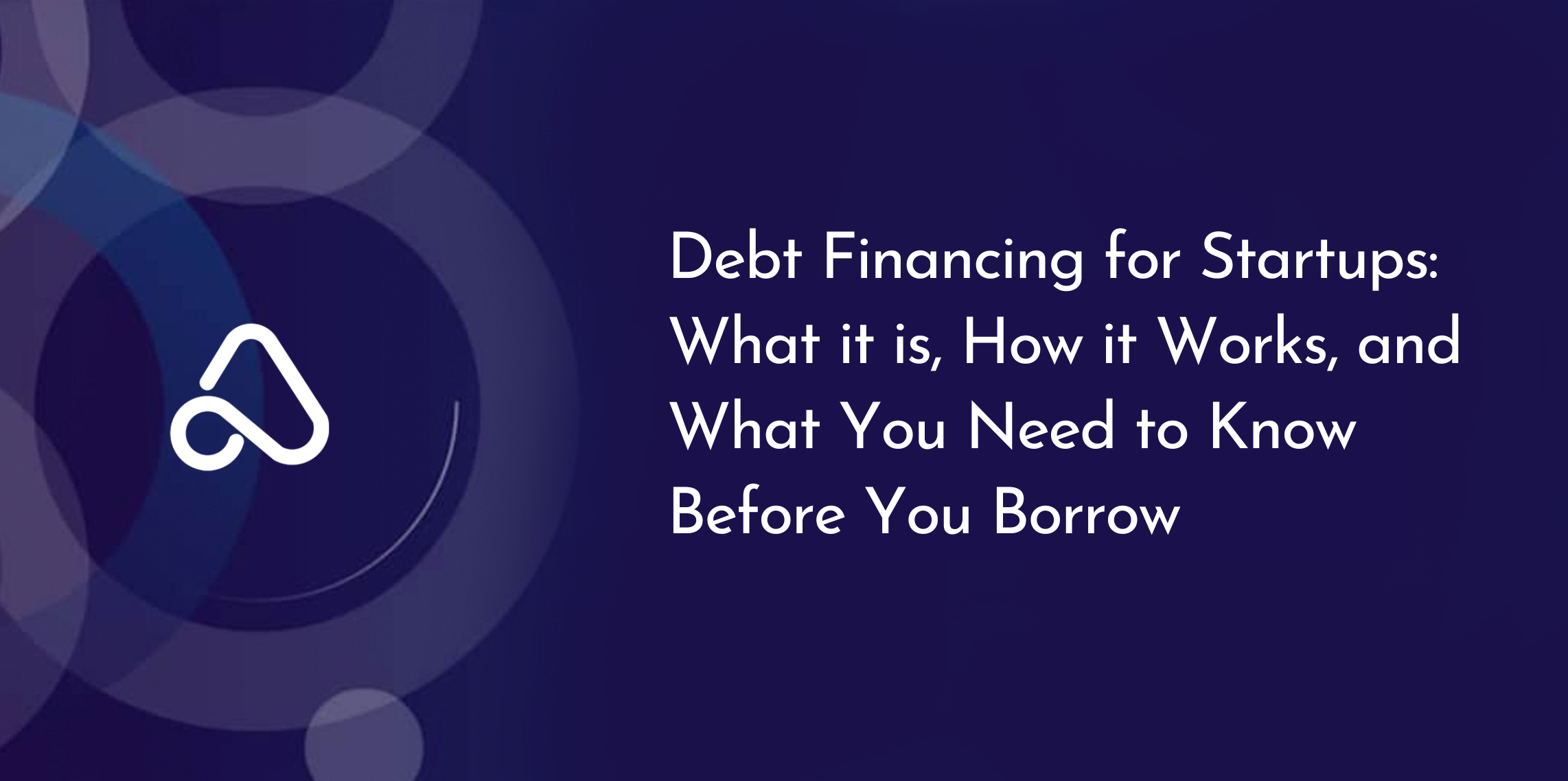Aidi — Debt Financing for Startups: What it is, How it Works, and What You Need to Know Before You Borrow
Return
Usually, when people talk about raising money for startups, you often hear “venture capital” and “angel investors.” But one funding option, which is often overlooked and hardly spoken about is Debt Financing, otherwise called Venture Debt, which is one of the oldest and most common ways to fund a business.
If you’ve ever taken a loan before (personally or for your business), then you’ve already had a taste of how debt financing works. But for startups, it’s a little more complex. If you’re just curious about how startups borrow money, this article is for you.
We’ll break down what debt financing actually is, how it works, how it compares to equity financing, when you should even consider it, and the pros and cons of using it for your startup.
What Is Debt Financing?
In simple terms, debt financing is when your company borrows money from a lender (such as a bank, financial institution, or private lender) with an agreement to repay the money (usually with interest) over a set period of time. Think of it like a loan but designed for business growth.
Unlike equity financing, where you give away a piece of your company in exchange for capital, debt financing allows you to keep full ownership but comes with repayment obligations.
How Debt Financing Works
Let’s say your startup needs $100,000 to expand operations or launch a new product. Instead of raising money from investors, you go to a bank or a venture debt firm and apply for a loan.
After reviewing your company’s financials, growth trajectory, and repayment ability, they agree to lend you the $100,000 with a 10% annual interest rate to be repaid over 3 years.
This means your company will have to repay $100,000 + interest (10% per year) over 3 years. Once the loan is paid off, the relationship ends. No equity or shares were exchanged, and the lender doesn’t own any part of your company.
The Difference Between Debt Financing and Equity Financing
Many founders confuse these two funding options a lot but they are very different. So, let’s make it clear:
- Ownership: With debt financing, you keep full ownership and control of your company. But with equity financing, you give up a percentage of ownership to investors in exchange for funding.
- Repayment: With debt financing, you borrow money and repay it back with interest over an agreed time period. For equity financing, no repayment is required. The investors get returns when the company grows or exits.
- Risk: For debt financing, the risk of not being able to repay the loan within the agreed period is high if your cash flow is weak. For equity financing, however, there’s no pressure for repayment, but pressure to perform as promised to enable the investor earn their ROI.
- Control: With debt financing, lenders have no say in how you run your company or its operations. But with equity financing, investors can interfere in or influence company decisions.
When Should a Startup Consider Debt Financing?
Debt financing is not for every startup. In fact, for very early-stage startups, it can be risky because there’s no predictable revenue to service the loan.
Debt financing works best for startups that:
- Have steady or recurring cash flow.
- Need capital for expansion or scaling, not for survival.
- Want to avoid equity dilution and keep control of the company.
- Can confidently present clear financial projections and repayment ability to lenders.
For instance, a SaaS startup with predictable monthly revenue may use venture debt to scale faster without giving up equity too soon. But an early-stage founder still figuring out product-market fit? Not advisable.
Now, let’s look at some of the advantages and disadvantages of debt financing for startups:
Advantages of Debt Financing for Startups:
- You Keep Your Equity: You don’t have to give away a piece of your company for capital. Once the debt is repaid, the lender is out of the picture.
- Predictable Costs: Interest rates and repayment schedules are agreed upon upfront, so you know exactly how much you’re paying back, which makes planning easier.
- Control Over Your Business: Unlike investors, lenders don’t get to interfere or influence strategic decisions.
- Builds Business Credit: Successfully repaying debt can strengthen your business credit profile, making it easier to secure bigger loans in the future.
Disadvantages of Debt Financing for Startups:
- Repayment Pressure: You must repay the loan regardless of whether your company is making profits or not. This can strain your cash flow.
- Collateral Requirements: Some lenders require personal guarantees or business assets as collateral, which can be risky if you default.
- Limited Flexibility: If your startup’s revenue is unpredictable, debt repayment schedules can disrupt your operations and growth plans.
- Can Limit Future Fundraising: Having outstanding debt may make equity investors hesitant to invest in your company.
Debt financing is not bad; it’s just misunderstood. It can be a very effective way to scale your startup while keeping your company’s ownership intact. However, if you’re still experimenting or struggling with cash flow, equity financing or grants may be safer options for your startup.





